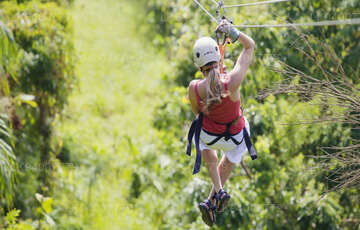

Miasto Kolombo
Kolombo, stolica Sri Lanki, to dynamiczne miasto łączące tradycję z nowoczesnością. Zachwyca kolonialną architekturą, tętniącymi życiem targowiskami i spokojnymi świątyniami buddyjskimi. Z różnorodną kuchnią, rozległą panoramą i pięknymi plażami, stanowi tętniące życiem centrum biznesu, kultury i turystyki, oferując bramę do odkrywania cudów Sri Lanki.
St Thomas Chapel
Ginthupitiya is a very busy region that is part of Kotahena (Colombo 13). Bustling with people; the place is jam-packed with residences, commercial buildings, public buildings, churches and temples. Ginthupitiya is also the home of the first Anglican Church in Sri Lanka, St Thomas’ Church. This simple church was built in 1816 by the British Governor Robert Brownrigg. However, the roots of its history run much deeper into the annals of time.
The History of St Thomas’ Church
Let us go backward in time to approximately 2000 years ago. It was the era when the Roman empire was on the rise. Jesus had died on the cross; crucified by the Romans who possibly considered him a political threat and a troublemaker. His twelve disciples (the Apostles) were devastated and tried their best to carry forward their master’s work. They tried to spread His word, and started traveling for that purpose.
Amongst them was the Apostle Thomas, also known as Doubting Thomas for not having believed in Jesus’ resurrection. He later became a true believer who avidly spread the message. St Thomas decided to move to India to spread the word in Asia. According to legend, it’s said that he stopped at Colombo port and did one of his very first sermons here. The port area was occupied by fishermen at the time, and they are said to have been an attentive audience. There is evidence (which is mentioned of further on in this account) to believe that Christianity may have spread briefly in the area as a result of his sermon. St Thomas went on to India after that, where he spent the rest of his life; and was credited for the establishment of seven and a half churches in India. Remains, that were believed to be his, were found in Mylapore and enshrined.
Centuries passed. Then in the early 1500s, the Portuguese invaded Sri Lanka. Their aim was not only to conquer the country, but also to spread Roman Catholicism amongst the ‘savages’.
As such they built churches wherever possible, and enforced Christianity in the places they conquered. Shrines of other religions were destroyed; and the most devout followers and leaders of the religions were killed. While all this was taking place, the Portuguese also kept an eye out for any viable places to build churches and further the spread of Christianity.
According to the records of the antiquarian Frederick Medis and according to the writings of Professor Peter Courtenay in his book ‘History of Ceylon’, it’s mentioned that there was a Nestorian cross found by the Portuguese in the Ginthupitiya area. The place was apparently called ‘San Thome Pitiya’ and there were some who practiced a rudimentary form of Christianity; pointing towards there having been a community of Persian Christians after St Thomas’ arrival. The Portuguese immediately established a church on the spot and worked hard to convert the people there. Soon the people there became devout Catholics.
But then when the Dutch took over the country from the Portuguese in the 1600s, they attempted to stamp out any evidence of Catholicism. During the widespread destruction that they wreaked during this time, St Thomas’ Church was pried out of the hands of Franciscan monks for its vantage point. The Dutch destroyed the religious symbols, and used the structure as their marine headquarters for the area. They also constructed three graveyards within the premises; one for their own countrymen, one for their local allies and one for the outsiders/non-conformists known as "Genthos" in Dutch. It is believed that it was the third graveyard that led to the name of the area being changed from "San Thome Pitiya" to “Genthopitiya". Approximately a century later, when the British took over, the displeased locals petitioned the new authorities to build them a new church. This group of locals, who were Tamil settlers from Kerala, even donated the funds to build the church; such that the British did not have to make any contributions. Many of the old materials were also reused, and the church was constructed under the direction of the Governor at the time, Sir Robert Brownrigg.
Formally consecrated in 1815, the Church became the very first Anglican Church to be built in Sri Lanka. The first church service was held on 16 July 1816, with the Rev. George Bisset conducting the Service. Rev. M. Twisleton delivered the sermon and prayers were said in Tamil by G. J. Ondaatjie.
The Church Today
Today, 200 years later, the simple structure of the church stands as testament to bygone eras. Surrounded by palm trees and sunshine, the place is quite calming and has a great view. The western wall of the church displays Brownrigg’s name. Though the inside seems quite plain, the place is livened up by an old-world charm with its white walls and finely polished wood.
Outside the church the graveyard still had some of the old Dutch tombstones. This graveyard tells a tale of artistry; from gothic sculptures to elephants, palm trees and classic European skulls; this place has it all. One of the things of note is the clear Tamil inscription on one of the graves, along with the Dutch lettering. It’s quite interesting to wander through this graveyard as it contains quite a bit of history.
Despite it’s seeming simple nature, St Thomas’ still hides many secrets that have not been found. Until just a few years ago it was undiscovered that the wooden panelling behind the altar was genuine Burmese teak, possibly brought in by the Dutch and used by the British in the style of the South Indian churches. Even more recently, excavations due to some weak flooring revealed ancient clay floor tiles buried under three layers of sand. The tiles were much older that the British era, though researchers are still unsure of the exact period.
The full extent of the historical unknowns behind St Thomas’ Church are still unknown, and only time will tell what these hidden secrets are.
O dystrykcie Kolombo
Kolombo to największe miasto i stolica handlowa Sri Lanki. Położone jest na zachodnim wybrzeżu wyspy, w sąsiedztwie Sri Jayewardenepura Kotte, stolicy Sri Lanki. Kolombo to tętniące życiem i pełne życia miasto, łączące w sobie nowoczesny styl życia z kolonialnymi budynkami i ruinami. Liczba mieszkańców wynosi 647 100. Region Metropolitalny Kolombo, definiowany przez dystrykty Kolombo, Gampaha i Kalutara, liczy około 5 648 000 mieszkańców i zajmuje powierzchnię 3694,20 km². Kolombo to miasto wieloetniczne i wielokulturowe. Jest to najludniejsze miasto na Sri Lance, z 642 163 mieszkańcami mieszkającymi w granicach miasta. Populacja Kolombo to mieszanka licznych grup etnicznych, głównie Syngalezów, Maurów i Tamilów. W mieście mieszkają również niewielkie społeczności osób pochodzenia chińskiego, portugalskiego, holenderskiego, malajskiego i indyjskiego, a także liczni europejscy emigranci. Zdecydowana większość lankijskich korporacji ma swoje siedziby w Kolombo. Wśród branż znajdują się m.in. przemysł chemiczny, tekstylny, szklarski, cementowy, skórzany, meblarski i jubilerski. W centrum miasta znajduje się drugi co do wysokości budynek w Azji Południowej – World Trade Center.
O dystrykcie Kolombo
Prowincja Zachodnia jest najgęściej zaludnioną prowincją Sri Lanki. Znajduje się tu stolica parlamentarna Sri Dźajawardanapura Kotte, a także Kolombo, centrum administracyjne i biznesowe kraju. Prowincja Zachodnia dzieli się na trzy główne dystrykty: Kolombo (642 km²), Gampaha (1386,6 km²) i Kalutara (1606 km²). Jako centrum gospodarcze Sri Lanki, w mieście obecne są wszystkie główne lokalne i międzynarodowe korporacje, a także wszyscy najwięksi projektanci i detaliści, dlatego warto przygotować się na zakupy w prowincji Zachodniej. Z uwagi na największą liczbę ludności w całej prowincji, w prowincji Zachodniej znajdują się niemal wszystkie najważniejsze instytucje edukacyjne na wyspie. Do uniwersytetów w prowincji zaliczają się: Uniwersytet Kolombo, Uniwersytet Sri Jayewardenepura, Uniwersytet Kelaniya, Otwarty Uniwersytet Sri Lanki, Uniwersytet Buddyjski i Palijski Sri Lanki, Uniwersytet Obrony Generała Sir Johna Kotelawali i Uniwersytet Moratuwa. W prowincji zachodniej znajduje się najwięcej szkół w kraju, w tym szkoły państwowe, prowincjonalne, prywatne i międzynarodowe.







































